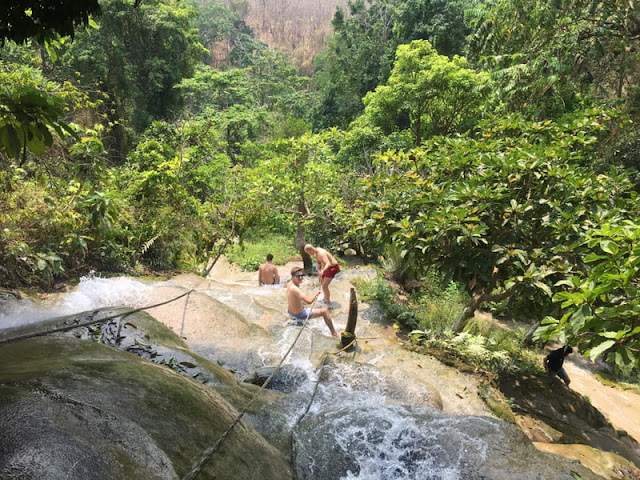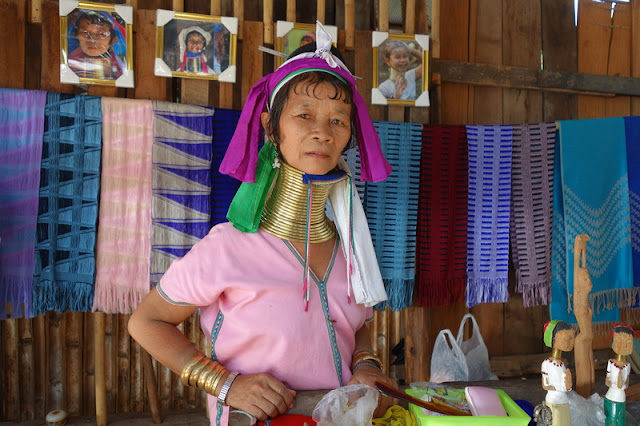Pang Ung: Discovering the Enchanting Beauty of Mae Hong Son Province
Unveiling the Mystical Charm of Pang Ung, Thailand’s Little Switzerland
The Allure of Pang Ung
Nestled in the serene landscapes of Mae Hong Son Province ,
Pang Ung is a destination that feels like stepping into a fairy tale. Known as
the "Switzerland of Thailand," this picturesque location captivates
travelers with its tranquil reservoir, towering pine trees, and ethereal
morning mist. Whether you're an avid photographer or simply seeking solace in
nature, Pang Ung offers an unforgettable escape.
Morning Magic at Pang Ung
One of the most mesmerizing experiences at Pang Ung is
witnessing the morning mist glide over the calm waters of the reservoir. As the
sun rises, the mist slowly lifts, revealing a breathtaking panorama of lush
greenery and majestic pine trees. This surreal scene has earned Pang Ung its
reputation as a dreamlike destination. Visitors often describe it as a place
where time stands still, allowing them to connect deeply with nature.
Exploring Nearby Attractions
While Pang Ung itself is a marvel, the surrounding areas are
equally captivating. Just a short drive away, you can visit Ban Rak Thai , a
charming village known for its tea plantations and scenic views. Another
must-see is Namtok Pha Suea - Tham Pla National Park , where you can explore
stunning waterfalls and limestone caves. These attractions make Pang Ung a
perfect base for discovering the natural wonders of Mae Hong Son Thailand .
Accommodations and Facilities
Pang Ung offers a range of accommodations to suit every
traveler's needs. From cozy homestays like Lung Nah Homestay to more luxurious
options like Ruam Thai Guesthouse , there's something for everyone. Prices
typically range from 100 to 400 THB per night, depending on the level of
comfort and amenities. Most accommodations provide basic facilities such as hot
showers, clean bedding, and sometimes even complimentary breakfast. For those
who prefer camping, there are designated areas with tents available for rent at
around 225 THB per night.
The local people of Pang Ung are warm and welcoming, eager
to share their rich cultural heritage with visitors. You can immerse yourself
in their way of life by participating in traditional activities or enjoying
local delicacies. Don't miss out on trying Khao Soi , a flavorful noodle dish,
or Sai Oua , a spicy northern Thai sausage. Local markets offer a variety of
handmade crafts and souvenirs, perfect for taking a piece of Pang Ung back home
with you.
Best Time to Visit
The ideal time to visit Pang Oung is during the cool season
from December to January. This period offers the most comfortable weather and
the chance to witness the famous morning mist. The temperature can drop
significantly at night, so be sure to pack warm clothing.
How to Get There
Reaching Pang Oung is part of the adventure. The journey
typically begins from Chiang Mai, following the scenic Mae Hong Son loop tourpackage route. Travelers can choose between the upper route via Pai or the
lower route through Mae Sariang. The winding roads offer glimpses of pristine
forests and traditional villages, setting the tone for the beauty that awaits
at Pang Ung.
Why You Should Visit Pang Ung
Pang Ung is more than just a destination; it's an experience
that rejuvenates the soul. Imagine waking up to the sound of rustling pine
trees, sipping coffee by the reservoir, and watching swans glide across the
water. With its cool climate and serene atmosphere, Pang Ung is the ideal
retreat for those looking to escape the hustle and bustle of city life.





























.JPG)
